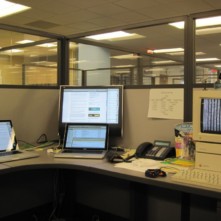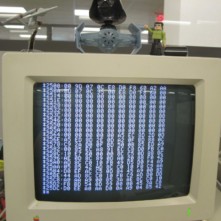Conflicting personalities in jOBS movie
| January 28th, 2013 10:33 AM by Ken Gagne | Filed under History, Mainstream coverage, Steve Jobs, Steve Wozniak; 1 comment. |
Last week, Gizmodo posted a clip from jOBS, a biopic of the life of Steve Jobs. In this scene, we see Ashton Kutcher of That ’70s Show as Steve Jobs and Josh Gad of The Book of Mormon at Steve Wozniak.
Like Gizmodo reporter Jesus Diaz, I had an initially positive reaction to this clip. I liked his disparate the personalities were, with Woz taking the time to greet a co-worker while Jobs is more interested in furthering an agenda. I liked that only one of them had an inkling of the revolution they were about to launch. And I liked that Jobs appeared to be taking advantage of Woz, which struck me as consistent with what I know of Jobs.
With that in mind, I shared the post on Facebook. It wasn’t long before other Apple II enthusiasts shared observations I’d overlooked. "Kutcher isn’t trying to pick up any vocal mannerisms… I’m sure the script is great, I liked the dialogue I heard in the clip above. I just think the actors they got are sub par in their delivery," wrote Marty Goldberg of the Electronic Entertainment Museum. Added Atari historian Curt Vendel, "If they are going to do something based on real characters, then they should actually try to nail it down better… I think iJobs is going to crash and burn because of the lacking of strong character portrayal." Even Apple II veterans Mark Simonsen and Don Worth were unimpressed.
One of my favorite comments came from Apple II game reviewer and programmer Brian Picchi, who suggested the best person to play the role of Woz is Woz. Gizmodo must’ve agreed that Woz would have some insight into Gad’s character, as they published a follow-up with Woz’s thoughts on this one clip. He was quick to point out that the scene featured in this clip never happened, though he points out such factual accuracy is unnecessary — the film is a dramatization, after all. More important is how untruthful the personalities are:
Personalities and where the ideas of computers affecting society did not come from Jobs… A more accurate portrayal would be myself in the Homebrew Computer Club (with Steve Jobs up in another state and not aware of it) being inspired by liberal humanist academics from Berkeley and Stanford and other places speaking of these high social goals. I decided then and there to help them reach those goals by designing a computer that was affordable. I gave it away to members of this club to help them. My goal was not money or power. In fact, when Steve came down and came to the club and saw the interest, he did not propose making a computer.
Will the film fail as fully as Vendel suggests? Probably not, I think. As Jason Scott added in the Facebook thread, "Spoiler Alert: This movie is not for vintage computing nerds."
jOBS — which has official presences online, on Facebook, and on Twitter — comes out April 19 from Open Road Films. It is not to be confused with Sony Pictures’ bigger-budget adaptation of Walter Isaacson’s biography of Steve Jobs.
















